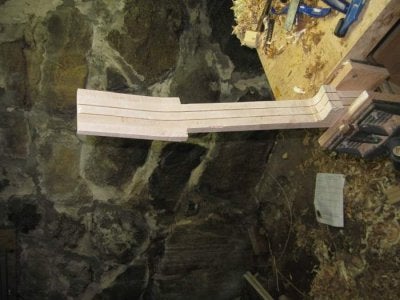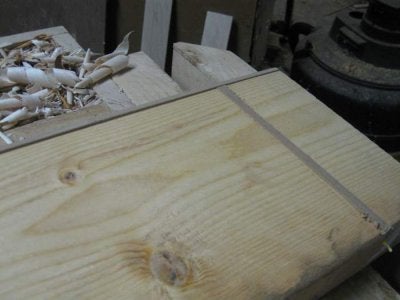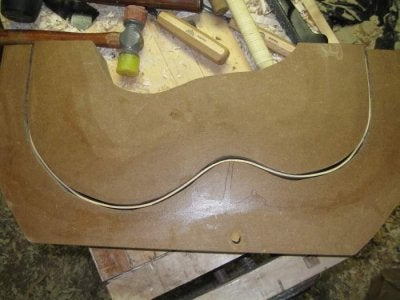Picton
Friend of Leo's
So I fell in love with archtops once while reading George Gruhn's vintage guitar book. Alas, neither my playing skills nor my bank account nor my 10-month-old allowed me to go buy even a cheap archtop, but I was able to persuade my wife to let me build one. Lovely lady that she is, she said yes, so here goes...
I vastly prefer hand tools, but I'm not above ripsawing on a table saw or bandsawing where necessary; all smoothing and shaping, though, is done by planes, spokeshaves, and scrapers. I'm not the most careful woodworker in the world, but I'd managed to crank out three ukuleles over the past couple of years, so I started with my own design:
24.5-inch scale
2 Mighty Mite P90s (my blues-playing uncle's recommendation)
Designed for a Bigsby B60 (still negotiating that purchase... )
)
Split-shaft Gotoh tuners
Maple construction, cherry FB (largely stuff I had on hand in the basement)
Hand-applied blue burst (because I have a LOT of blue dye on hand)
I drew up a plan on the back of some of my students' projects:
I vastly prefer hand tools, but I'm not above ripsawing on a table saw or bandsawing where necessary; all smoothing and shaping, though, is done by planes, spokeshaves, and scrapers. I'm not the most careful woodworker in the world, but I'd managed to crank out three ukuleles over the past couple of years, so I started with my own design:
24.5-inch scale
2 Mighty Mite P90s (my blues-playing uncle's recommendation)
Designed for a Bigsby B60 (still negotiating that purchase...
Split-shaft Gotoh tuners
Maple construction, cherry FB (largely stuff I had on hand in the basement)
Hand-applied blue burst (because I have a LOT of blue dye on hand)
I drew up a plan on the back of some of my students' projects:





























